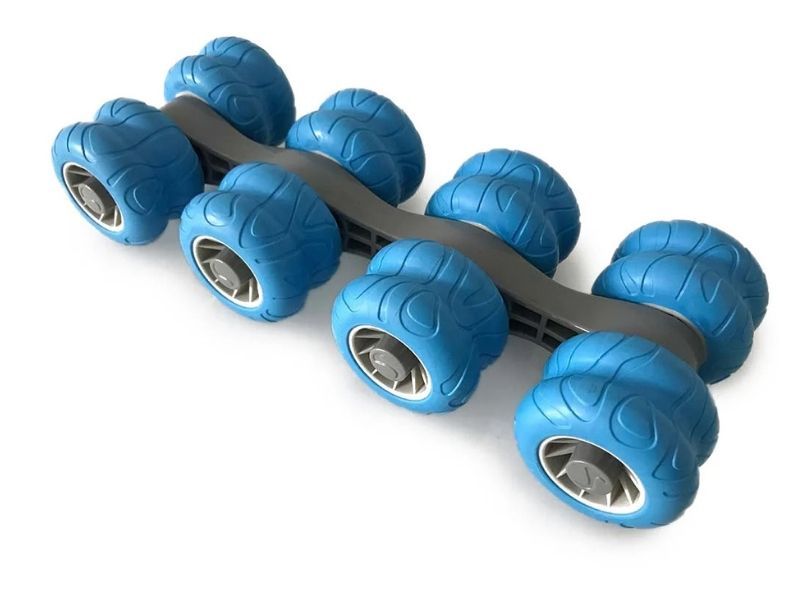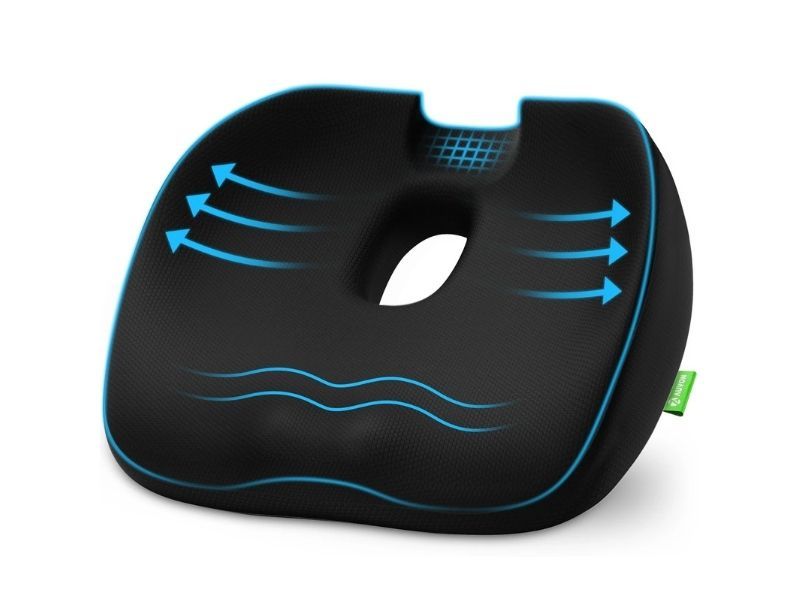Thorex Back Massage Roller Review

Go here to grab your Thorex: https://amzn.to/3tsBjR1
And in today’s product review, again, we’re taking a look at the Thorax device. And we’ll see what applications we can use this tool for. So first and foremost, it comes in a nice box. Here it’s got a little product card with it. Just taking a look at this here gives you some of the benefits and some of the areas that you can work on. Uh, we’ll talk about that in a few moments here.
And of course, you have the device. The device is pretty straightforward. It is just a set of wheels on top of this heavy base here, and it has a couple of great features to it actually, which I do want to comment on. First and foremost, this thing is pretty heavy duty. It’s pretty common these days to see a lot of products that are not seemingly made very well or they’re not very sturdy and they’re not going to last very long.
And I would say that that is not the case with the Thorax here. This thing is pretty solidly built. The chances of actually breaking this thing, you can tell right away from the from the density of it, is pretty pretty low. So that’s pretty cool.
So one of the areas that I’ve been looking for, and the reason why I wanted to do this product review, is finding tools that will work really well for assisting and mobilizing not only the spine, the mid to upper portion of the spine in particular, but also something that’s going to be able to address the soft tissues in that area pretty effectively. So I’m going to grab the skeleton here, we’re going to have a look.
All right, so pull out the skeleton here so we can have a look. So we have multiple areas of spine: we’ve got the lumbar spine, thoracic spine, and the cervical spine. Different curvatures, different areas that we need to be able to focus on. They’re oftentimes going to require different tools.
So I have specific tools that I like with the lumbar spine, others with the cervical spine. I’ve reviewed those elsewhere on my channel, so make sure you take a look at those videos. But in particular, let’s talk about this thoracic spine, which is the center section.
Classically, what most people use to mobilize the thoracic spine is a foam roller. And the foam roller is placed essentially perpendicular to the spine, so that you can lay back and extend over it. So that’s obviously good for creating or improving some extension in there. We’re creating a fulcrum that we can basically fold over.
The challenge with this is, the benefit I should say, is it’s a little bit more precise to certain areas depending on the size of the roller and where you’re emphasizing on. The downside to this is that we’re not getting an equal dispersion of forces throughout that portion of the spine.
So it’s hard to actually reduce the intensity in some areas and then gain in others and so forth. It’s harder to kind of manipulate certain areas with a degree of precision. Now, the other thing we have the problem with the foam roller is that the foam roller makes contact with the spinous process for the most part, depending on how thick your extensor muscles are.
So when you lay over it, you’re going to be making contact with the spine. You’re not going to get much effect on the soft tissues that are next to the spine. We’ve got the big thoracic extensor muscles, and then as we start to move up in between the shoulder blades, you have the mid traps, you have the rhomboids, and again, some of those extensors kind of coming off to the side here.
The serratus posterior superior is actually back there too on the side of the ribs. These are all areas that are easy for a massage therapist to get their hands into, but when you’re trying to get leverage on a roller or to try to get those areas worked on with tennis balls and so forth, if they’re not exactly like the right size, it’s very hard to get pressure into those areas.
So the Thorax actually works quite well for this because of its length and the way that it distributes the forces a little bit more, as I just talked about. It’s a little bit easier to be able to get the right amount of pressure in these hard to reach areas.
Now, one of the things that comes up right away is that people say, ‘Well, why don’t I just put, you know, two tennis balls together or lacrosse balls?’ You can absolutely do that, but the primary problem that you have here is that when you place them into certain areas of the back, it’s hard to adjust the pressure.
Most of the time, if you’re using the right size ball, it for the most part, you’re using too much pressure in that area and it’s just too sensitive to be able to even relax. So you’ll find yourself laying over that thing struggling because the pressure is just too much. On the opposite end, you’ve probably tried already using a couple of tennis balls, and just because it’s so easy for you to fold over it, you’re not going to get enough pressure. So it’s the Goldilocks situation: what we want is it to be just right, the right amount of pressure.
So what I found is very quickly when I started rolling on this Thorax, first of all, I rolled on it toward the mid to the lower portion of the spine. Did pretty well and it has, because of the way that this is designed, your spinous process is going to drop inward relative to the wheels. So you’re going to be making contact with those muscles on the side of the spine.
So right away you’re going to get some soft tissue work in particular in that area. You’re going to get some clicks and pops in the thoracic spine as well, so it will help with the spinal extension mobilization portion, but what I’m emphasizing here is the value of doing the soft tissue work on the extensor muscles as you start to roll up even higher there.
Because a lot of your weight is still on the lower rollers, you’re going to get an appropriate amount of pressure there in those upper thoracic lower cervical muscles. So believe me, it’s not super wimpy. You will feel it when you get up there. And in particular, at the top of the shoulder blades there, you’ll oftentimes hit some trigger points that will tend to refer into the shoulder area.
So I think the most surprising part of giving the uh, the Thorax ago was how good it was in working that upper thoracic area in particular. So when you look at a tool, obviously it talks about all of these other different areas that you can work.
You can roll in your calves, you can roll on your thighs and so forth, and those are okay, but the most important, you know, piece of this is again this entire thoracic area. I think the purchase price of this thing, if you have particular needs for that area, which a lot of my clients do in certain circumstances, that alone warrants a good product review and and this is the best tool for the job.
Okay, so in a moment here, I’m going to show you some of those other areas, but all right, so let’s give this guy a go. When I’m laying down on this thing, it’s pretty easy to situate your spinous process, that’s the middle of the spine, in between these these guys, and in the beginning, I always like to start kind of at the top of the lumbar spine.
I don’t really advocate people rolling on the lumbar spine very much without some oversight from a clinician who knows your individual scenario, but the thoracic area is pretty safe.
So as I lay on this thing, just from the get-go, that feels pretty good. I’m already getting some sensitive areas next to the spine, near the upper lumbar spine, lower thoracic area. Very common to have areas in there that are sensitive and or have trigger points at the bottom of the ribs.
So of course I can hang out there. As with anything that you’re laying on with the extension, it’s not comfortable just to hold your head up. Your neck’s going to get tired. Okay, so you can put your hands behind your head here and that’ll allow you to rest down, and of course now we’re not so heavily over the fulcrum here. It’s still pretty comfortable, and I could just hang out here until those tissues start to release.
Once they start to feel a little bit better, I can get a little bit of rolling action here. So I have to just push my heels down into the ground and got some tender areas there. So like I said, if you’re concerned that this thing’s not intense enough for you, then don’t worry about that. Okay, it definitely is. And as I work my way up there, I can work up toward the spine or up to the scapula,
Now I’m starting to get up there, and I’m already hitting a couple of trigger points that are referring into my shoulders in my upper thoracic area, which is just again a hard to reach area, and it’s fantastic. So I can extend back over the roll a little bit more if I want, just to give a little bit of spinal extension mobilization, or I can just stay with the muscles and keep working.
Now I’m quite a bit off the roll, or off the uh, the thorax. I don’t know what to call it. I think I’m going to call it a roller here, but the mid thoracic area is making contact, and now the wheels are pretty much underneath my head. I can rest my head there, and again, this is where you start to get that little teeter-tottering motion where it’s hard to get that pressure.
So if I wanted to now, we’re gonna have to see if I can tolerate this. We’ll lift the hips up a little bit, and woo, now we start to put that pressure into that upper thoracic area again, onto those muscles. So again, I’m not working very hard here, and that’s the part that I like. If you’re working hard, it’s hard to relax, and that’s the point of getting a soft tissue release, is relaxing into it.
And if you’re straining, trying to hold yourself upright, or it’s too intense, then it’s going to be much harder to achieve that effect. Okay, so again, pretty good for that, and come back off of it, and here.
So we start to roll other areas, and we start talking about the glutes, and we start talking about the hamstrings. It’s definitely possible to do that. So I could just sit right on the side here. Now, because of the surface contact area, which is much smaller, it’s harder to get that up into the tissue, into the glutes.
I mean, I definitely feel it here, and I can work my way around. It’s pretty comfortable, probably not the best tool for the job in terms of rolling the glutes, but like I said, you can use almost any tool for multiple applications. If you just want to pick one thing, you can certainly do this. Okay, you can roll on that. If you want to roll on the lateral thigh, certainly doable there as well, and again, the part of it that is nice is that it rolls pretty well because it has so many wheels. Okay, so you can roll and work your IT band area. Of course, you can work on hamstrings.
Okay, still with hamstrings, always the challenge with this is getting enough pressure down into the hamstrings. So not really an ideal tool for a lot of people who are going to need something a little bit more hefty or direct. Okay, calf we can roll that as well. So again, if you want to just use one tool for multiple jobs, then that will get the job done. Okay, but my final verdict here: Thorax, is it worth it just for the spinal extensor rolling in particular, the muscles more than the joint mobilization itself?
This thing gets an A plus. It’s really, really good. I’ve had a lot of clients try it who are happy with it and who want one. So to me, that’s the litmus test. After I’ve done a lot of manual therapy on them, and then I let them try out the tool, do they like this, and would they buy one at home?
And a lot of my clients said yes they would, so to me, that gives it a positive, uh, positive review. So I would highly recommend it if you’re interested in something that’s going to help with that upper thoracic area. You’re going to get a lot of use out of it. All right, I hope that was helpful.
Thanks for watching.
Sam Visnic
I’ve spent my life studying the fundamental aspects of human health with a focus on movement and clinical massage therapy. In a world of specialists, surgical procedures, drugs and quick fix remedies, I’m committed to finding and developing strategies that help people stuck at the “gap”. Over the last 20 years I’ve studied dozens of systems and methodologies for uncovering the root cause of aches and pains, along with postural and movement issues. Pain science, the art and science of hands-on soft tissue massage techniques, myofascial release, and coaching movement is essential in my practice. Integrating different methods but above all deciphering WHEN to use different techniques with different people and situations, along with integration of movements that people want to be able to do again is the key to long term success with my incredible track record with clients. Understanding the various elements that contribute to conditions and the power of communication and education makes my Release Muscle Therapy program separate from other hands-on therapy approaches.
Blogs You May Be Interested In
Categories
-
Deep Gluteal Pain Syndrome
-
Deltoids
-
Fallbrook
-
Foam Rolling
-
Glutes
-
Hamstrings
-
Hypnosis For Pain
-
Lats
-
Levator Scapulae
-
Lifestyle
-
Massage Therapy
-
Mobility
-
Movement and Exercise
-
Murrieta
-
Muscles
-
Nutrition
-
Obliques
-
Pain
-
Pectorals
-
Piriformis
-
Plantar Fasciitis
-
Product Review
-
Psoas
-
Quadratus Lumborum
-
Quadriceps
-
Rhomboids
-
Serratus Anterior
-
SI Joint
-
Sternocleidomastoid
-
Stretching
-
Subscapularis
-
Temecula
-
TMJ
-
Trapezius
-
Uncategorized
















